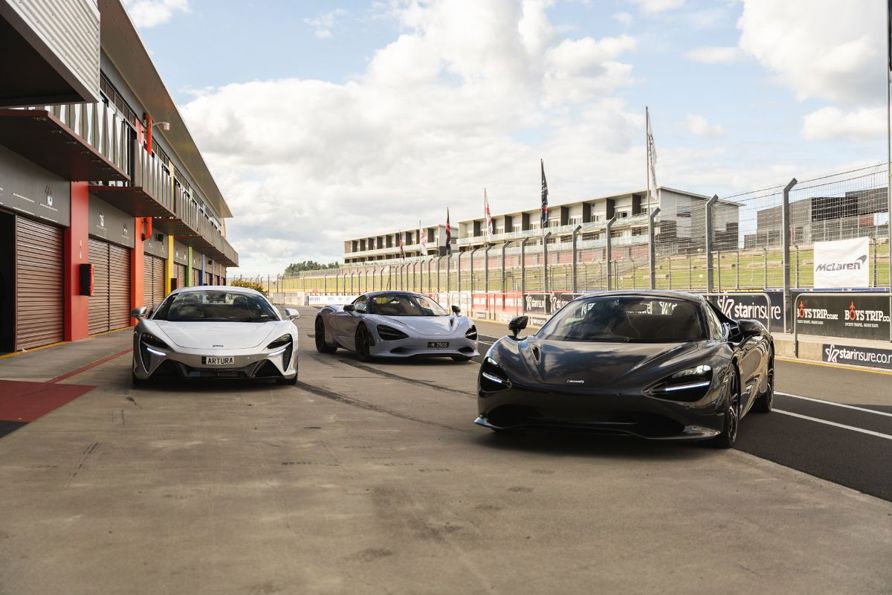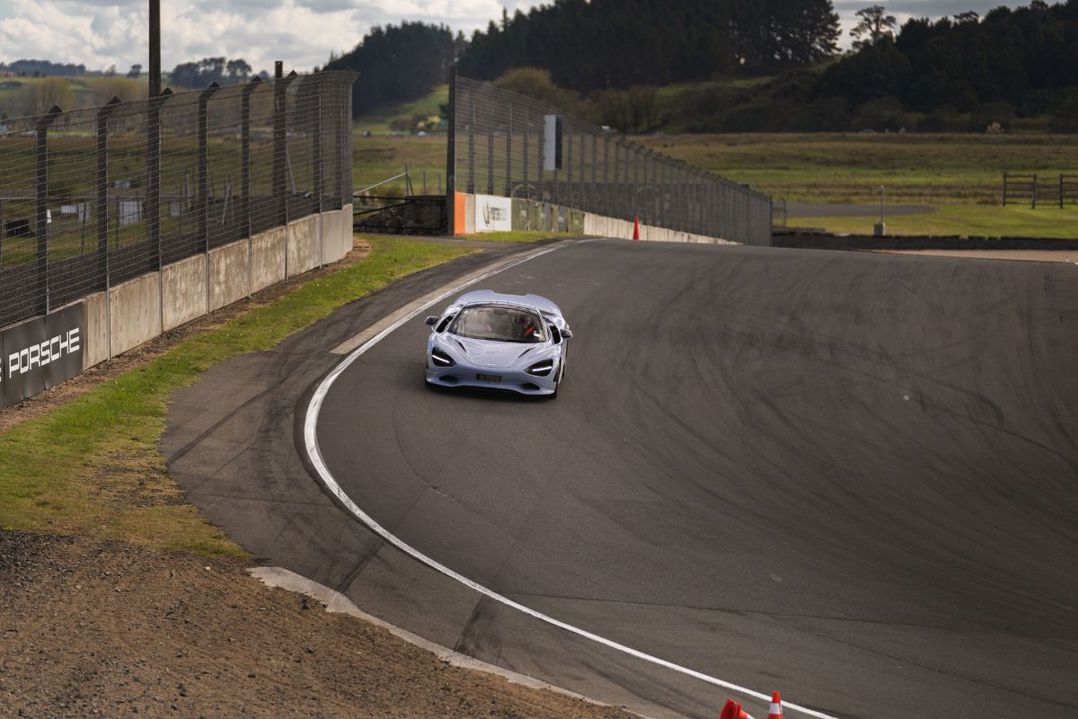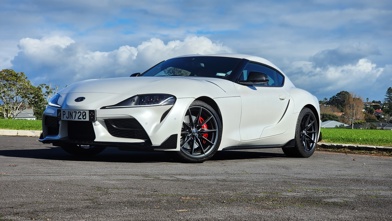McLaren will tell you 30 is the magic number for its new 750S supercar. Thirty per cent of components are updated or replaced compared to the previous 720S, it has 30 more metric horsepower (750ps, hence the name) and it’s 30kg lighter - making it the lightest series-production McLaren.

Numbers, numbers. McLaren has a reputation as the most, shall we say, precise of exotic carmakers: incredible attention to detail and a proudly nerdy approach to the execution of speed and power.
But don’t assume that means the passion isn’t there. The numbers are magic, remember, and when you drive a car like the 750S you realise just how visceral a McLaren can be. Especially one where the driving experience has been intensified in units of 30.
Now comes the tricky bit, because I have to write about driving the 750S on track at Hampton Downs without sounding like I think I’m the world’s greatest driver who extracted every last km/h out of cornering speed from one of the world’s most exciting cars (I’m not, I didn’t, it is), or engaging too much in the topos of humility and making it sound like I was terrified the whole time (I wasn’t, not all the time anyway).

We didn’t drive the 750S on the road at all, but it’s a tribute to the accessibility of the thing at low speed that it’s remarkably easy to get a feel for it at more normal speeds on track. We got a few familiarisation laps on the Hampton Downs National Circuit, before donning helmets and having the freedom to really explore what the 750S can do.
Part of the sheer usability is thanks to the new-generation interior design. McLarens have always felt a bit spesh inside thanks to a racecar-like minimalist ambience, but some of the controls have also felt a bit haphazard. The 750S has a much cleaner-looking infotainment screen and the serious controls for what the company calls Active Dynamics (powertrain, suspension) are now mounted at the top of the instrument binnacle on huge rocker switches, meaning you can fingertip-flip between various settings without taking your hands off the wheel.

There’s also a neat “flying kiwi” button, sorry McLaren Control Launcher, that allows you to store your favourite combination of powertrain, suspension and active aerodynamics settings.
The straight-line performance is… explosive. No other word. With 0-100km/h in 2.8 seconds, the 750S is as fast as the now-iconic P1 hypercar of a decade ago (note the centre-exit exhaust, a very specific P1 callback). Rear-drive of course, so the thing squats down, wriggles and catapults you into white-knuckle territory.

In the more sedate drive-modes the 750S can still flow around the track and serious velocity without raising too much of a sweat (it or the driver). The heavily revised linked-hydraulic suspension does a great job of balancing compliance with high-speed stability; the 750S is softer at the front and stiffer at the rear than the 720S.
But flick those rocker switches to max-attack mode and the 750S really does feel like a racecar. The V8 howls, the transmission becomes brutally efficient and there’s constant dialogue between the sheer corner force served up by the suspension and the sticky Pirelli P-Zero tyres.

It’s actually an intriguing machine to watch on track, where you can observe the stance of the thing and watch the active rear wing at work. The central exhaust means the wing can be positioned 60mm higher than the 720S; the surface area is 20 per cent greater and we’re going to say it looks 30 per cent (that’s the number of the day) more dramatic as it airbrakes into fast corners.
It’s hard to put all of this into normal-car context, but on the day McLaren also had an Artura to sample on track. We had one to test late last year and it’s a very serious 500kW hybrid supercar. But honestly, it felt like a Corolla in comparison to the 750S, which is next-level stuff.

So yes, you can take your $500k McLaren on the track and know the car will simply eat it up. In fact, if you do it at a brand-approved day you’re even still fully covered by the factory warranty, which is quite remarkable. If that’s your thing, the 750S can be suitably specified with the likes of carbon ceramic brakes, track-focused P-Zero Trofeo R tyres and carbon-fibre racing seats.
But the 750S is also supposed to be adept as an everyday supercar. It rides really well when you want it to, there are Alcantara and leather trim options, Bowers & Wilkins audio and the hydraulic-lift system for the nose raises for tricky driveways in half the time of the 720S.

There’s also the obligatory Spider version, which we didn’t drive, but was on display at the track. That’s characteristically bespoke, with different aero and, if previous McLaren Spider experience holds, similar levels of chassis rigidity to the coupe thanks to the company’s signature carbon-fibre tub. That would be a lot of wind in the hair; 30-somethings more at least.
ENGINE: 4.0-litre twin-turbo petrol V8 POWER: 552kW/800Nm GEARBOX: 7-speed automated dual-clutch, FWD 0-100KM/H: 2.8sec CONSUMPTION: 12.2l/100km (WLTP) PRICE: $520,000+ (depending on specification/options).





